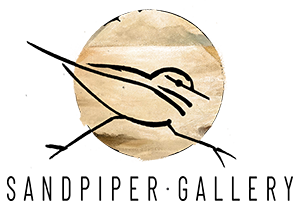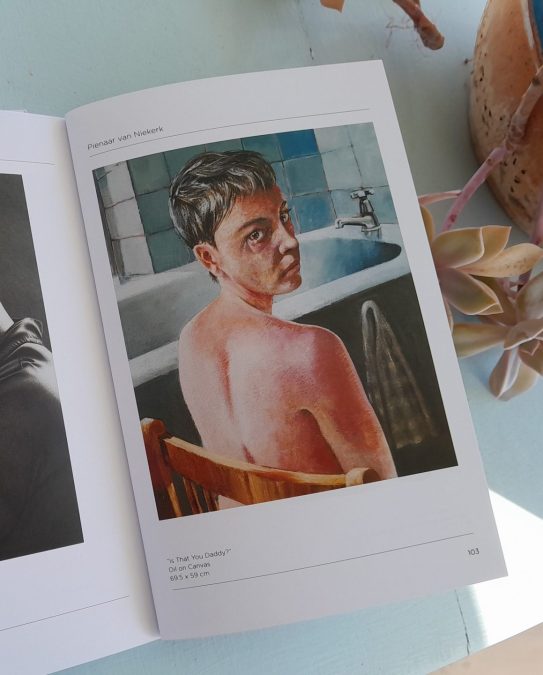I am waiting in anticipation for the final countdown of the Peregrine Mission One launch which is scheduled for Monday, 8th January at 06h30 (SAST Zulu) time.
Finally, Peregrine will be taking my artwork to the moon! As you can see below, it won’t be a “direct flight” and Peregrine will be doing any number of orbits around the Earth and then finally, landing on the moon.
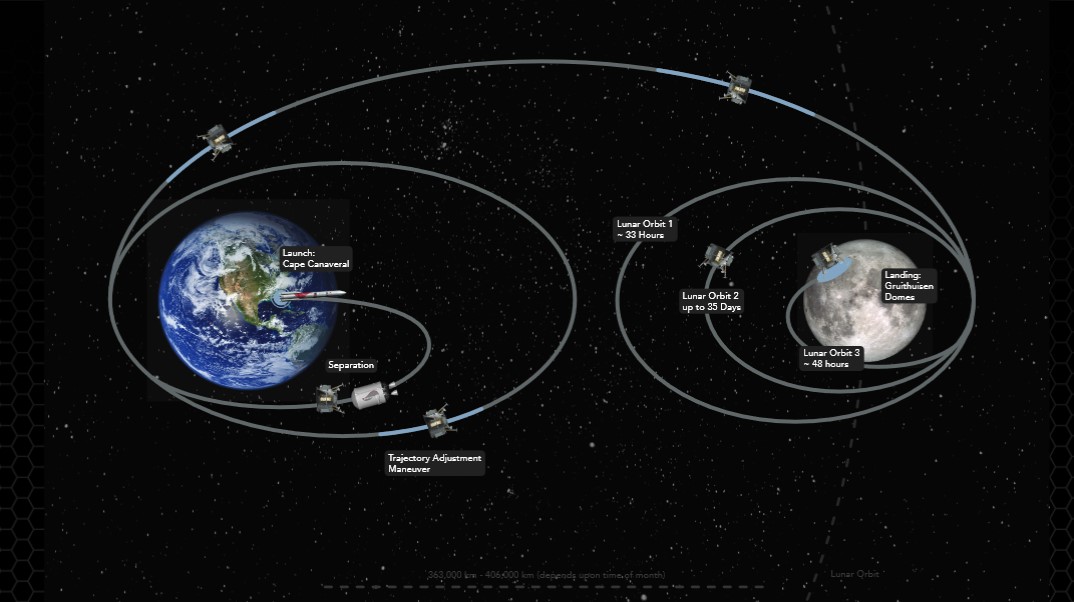
What is Peregrine Mission One?
Astrobotic’s Peregrine Mission One is carrying 21 payloads (cargo) from governments, companies, universities, and NASA’s Commercial Lunar Payload Services (CLPS) initiative.
Peregrine is a lunar lander – a spacecraft that, once separated from a rocket (United Launch Alliance’s Vulcan launch vehicle), will power on and continue its journey to the Moon solo. Peregrine was developed at Astrobotic to serve as a delivery vehicle that will fly to the Moon, land safely, and provide power and communications for payload customers.
I might be biased but I think that the MOST important payload is the Lunar Mission One – Digital Art Gallery which will be the first digital storage payload to the Moon. The payload will support Lunar Mission One’s “Footsteps on the Moon” campaign.
See my previous blog post “A Time Capsule of Human Creativity, Stored in the Sky” which describes in detail the purpose of the mission and what it is to carry to the moon for posterity and generations to come.
The Peregrine Mission is also slated to be one of the first U.S. lunar landings since the final mission of the Apollo program – Apollo 17 – over 50 years ago so that is an achievement in and of itself.
Here is a photo of how the Peregrine lander is incorporated into the nose cone of the Vulcan rocket.
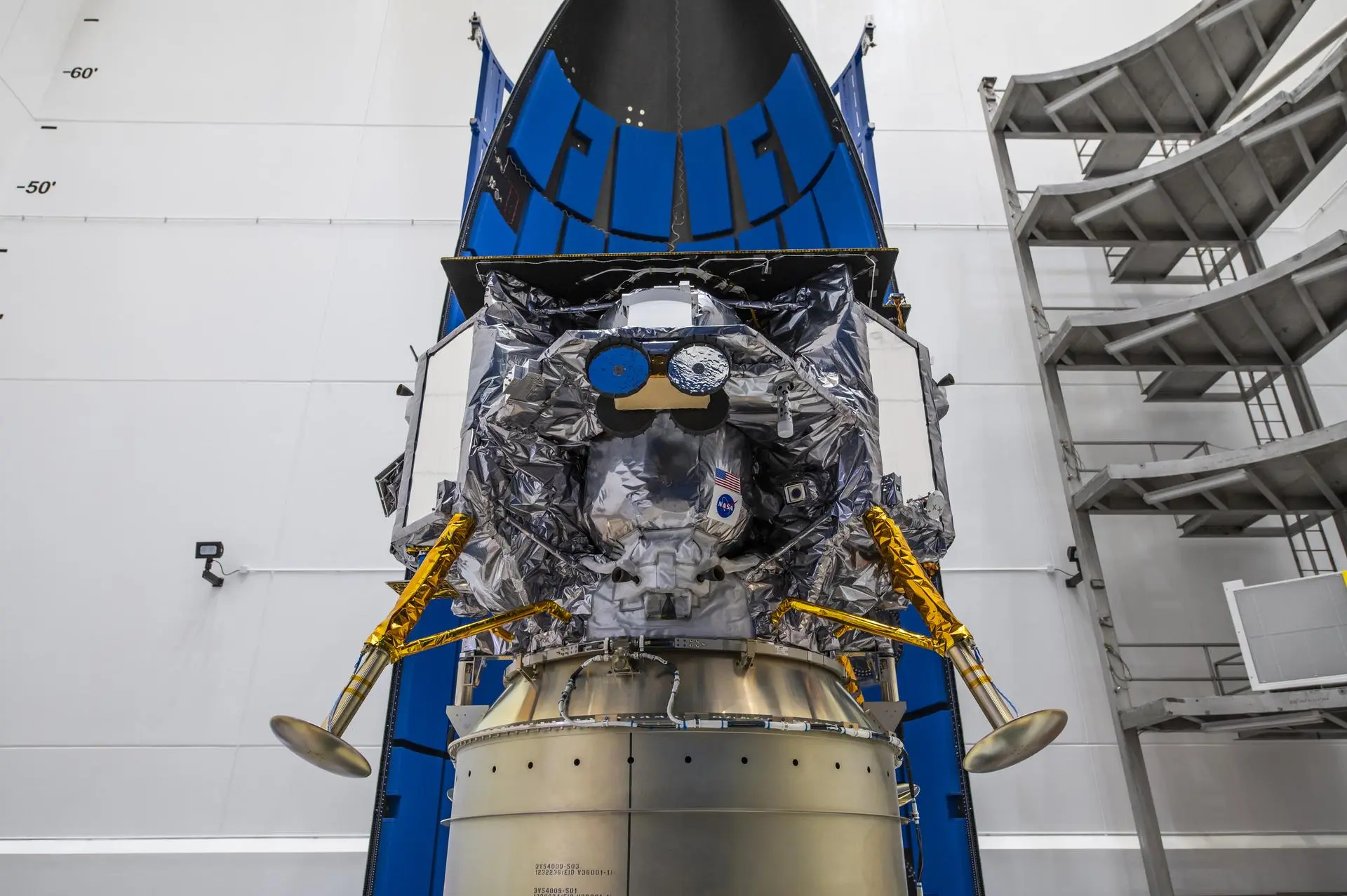
If you are interested, here is the Launch information in PDF format to read.
Read more about Astrobiotics’ Peregrine Mission One here in PDF format.
Peregrine’s final landing site (1)
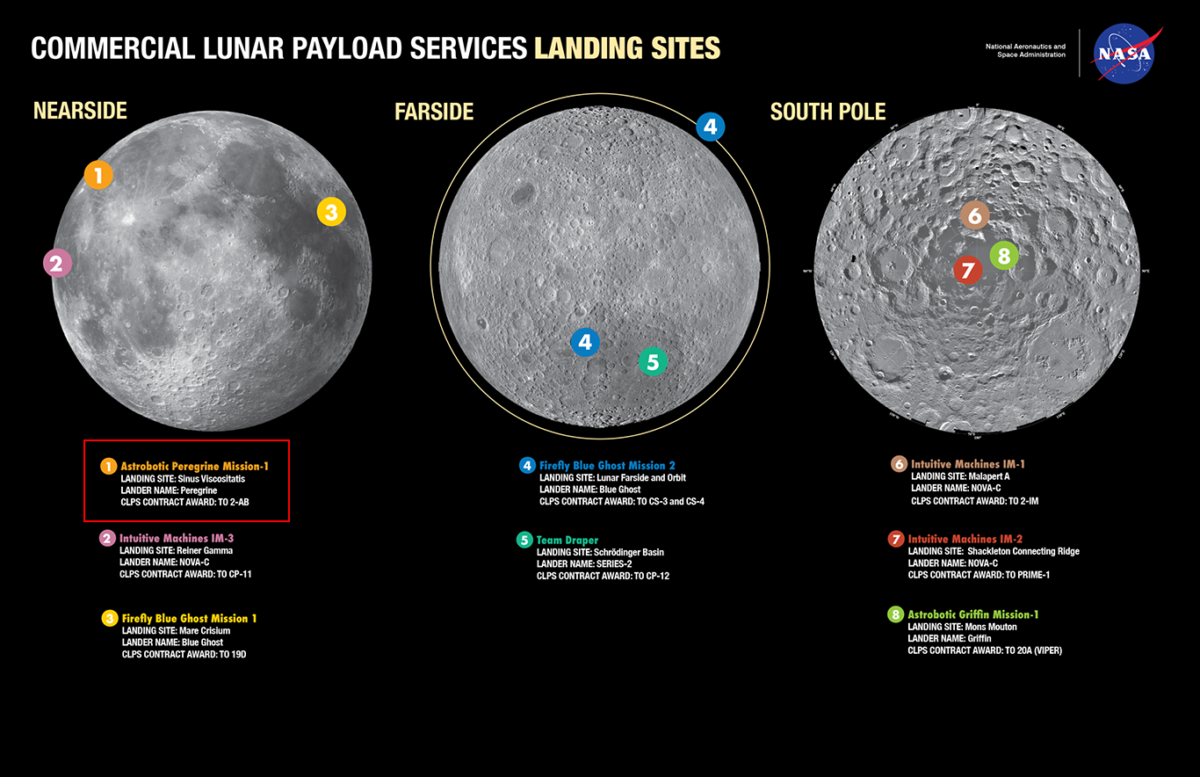
The Launch and Landing on the Moon
As part of NASA’s CLPS (Commercial Lunar Payload Services) initiative and Artemis program, United Launch Alliance (ULA) and Astrobotic are targeting 2:18 a.m. EST Monday, Jan. 8, for the first commercial robotic launch to the Moon’s surface. Carrying NASA science, liftoff of ULA’s Vulcan rocket and Astrobotic’s Peregrine lunar lander will happen from Launch Complex 41 at Cape Canaveral Space Force Station in Florida.
Live launch coverage will air on NASA+, NASA Television, the NASA app, and the agency’s website, with prelaunch events starting Thursday, Jan. 4. Learn how to stream NASA TV through a variety of platforms including social media. Follow events online at: https://www.nasa.gov/nasatv.
Peregrine will land on the Moon on Friday, Feb. 23, 2024!
Commemorative Mission Patch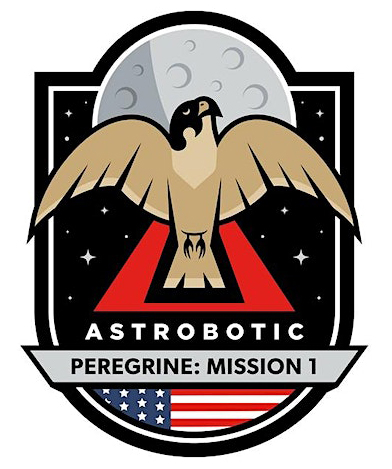
Here’s a little about the “visual” side of the Peregrine Mission and its commemorative patch.
Astrobotic’s maiden voyage is Peregrine Mission One (PM1). This commemorative mission design emphasizes upward movement, exploration, and strength. The Peregrine falcon lifts toward the Moon, capturing the spirit of the team as they develop and prepare the Peregrine lander for PM1.
Why “Peregrine”?
- The Peregrine falcon is the most widely distributed bird of prey on Earth, with a presence on every continent but Antarctica. In parallel, countless people and cultures from around the world are represented on Astrobotic’s Peregrine lander.
- Peregrine falcons are also nimble and quick, clocking in at over 200 mph and earning the title of the fastest animal on the planet (yes, even faster than cheetahs).
- “Our Peregrine lander is aptly named to represent how Astrobotic has nimbly adapted to the many challenges and changing landscapes of the space sector,” says John Thornton, Astrobotic CEO. “This design tells our PM1 story every time it’s sewn onto a jacket or projected onto a screen.”
Hidden Meanings
- The focal point of the patch is the peregrine falcon, majestically jetting towards its lunar destination.
- There are seven craters in the patch’s Moon design, representing the six nations (with one crater representing the world through the DHL MoonBox program) that are joining Astrobotic on its mission.
- The phase on the patch’s Moon graphic matches the real Moon’s phase that people will see at the time of Peregrine’s touchdown.
- Utilizing our peregrine bird imagery was a nod to NASA’s Apollo 11 patch – highlighting the historical significances and firsts that PM1 could accomplish.
